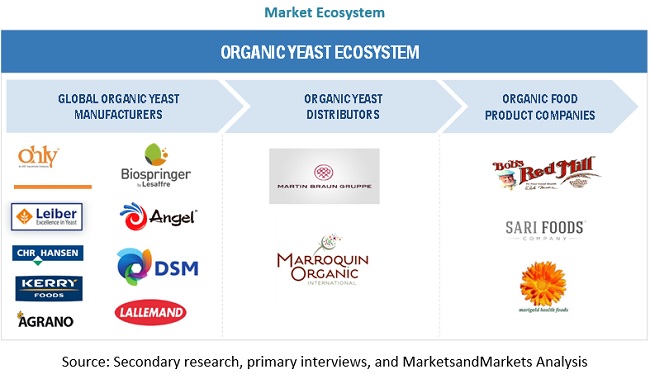The global organic yeast market size is estimated to be valued at USD 364 million in 2020 and is expected to reach a value of USD 599 million by 2025, growing at a CAGR of 10.5% during the forecast period.
Driver:
With the increase in awareness among consumers about the benefits of organic food products, the retail sales of organic food products have increased. The US is one of the largest consumers of organic food products in the world, followed by Europe. The largest markets for organic food products in Europe are Germany, France, and Italy.
According to a report by FiBl in 2017, the market for organic food products is growing in countries such as Brazil, Mexico, Chile, and Paraguay. Similarly, the US organic sector is also witnessing an upward trajectory as consumers are witnessing a high demand for organic products, which has enabled them to acquire a larger market share.
Restraint :
There are regulatory bodies, such as the United States Department of Agriculture (USDA) and European Economic Community Council, which have laid down stringent regulations for the production, labeling, and marketing of organic products. The regulatory bodies in various regions differ and the rules pertaining to each region might vary slightly. This could cause manufacturers to focus on production in a manner, which would cater to the regulatory scenario in the importing region. The interpretation and concepts for each region vary, which could add to the overall production cost of the product. This, in turn, would increase the prices of the end products sold to consumers. The non-compliance with regulations could ban the product from the market or include a penalty.

Opportunity:
Monosodium glutamate (MSG) is the sodium salt of glutamic acid. It is used as an additive to offer “umami” taste in food products to improve palatability. MSG helps in enhancing the presence of other taste-active compounds. However, the use of MSG has been clinically proven to have caused health-related issues such as obesity, oxidative stress, renal, and hepatotoxicity. According to the FDA, MSG is approved to be used in the conditioning of vegetables, tuna, food dressings, and feed. The increased awareness among consumers about the toxic effects of MSG consumption in food and stringent regulations governing the maximum permissible limit (MPL) has led to a rise in demand for substitutes, which could provide similar taste-enhancing properties without any harmful effects.
Organic yeasts, such as yeast extracts, derivatives, and nutritional yeast, are used as alternatives to MSG and provide the “umami” taste. Certain organic yeast manufacturers also claim that the products offered by them can be used as an alternative to MSG. For instance, Koninklijke DSM (Netherlands) claims that their product, Maxarome, can be used in a wide range of food applications instead of MSG.
Challenge :
Although the consumption of organic food products has a positive effect on the overall health of the consumers, one of the major factors discouraging consumers is the high prices associated with organic products. Organic food products are generally costly due to the high costs associated with agricultural production and processing. The need for legal regulations and compliance in a specific country also adds to the pricing of the product.
The prices for organic food products vary from conventional products by a margin of 5%-60% for cereals & grains and 5%-30% for milk and other dairy products. In rare cases, consumers are willing to pay a premium price for these products. Key companies in various countries have extensive distribution networks, which make organic food products more accessible among consumers.